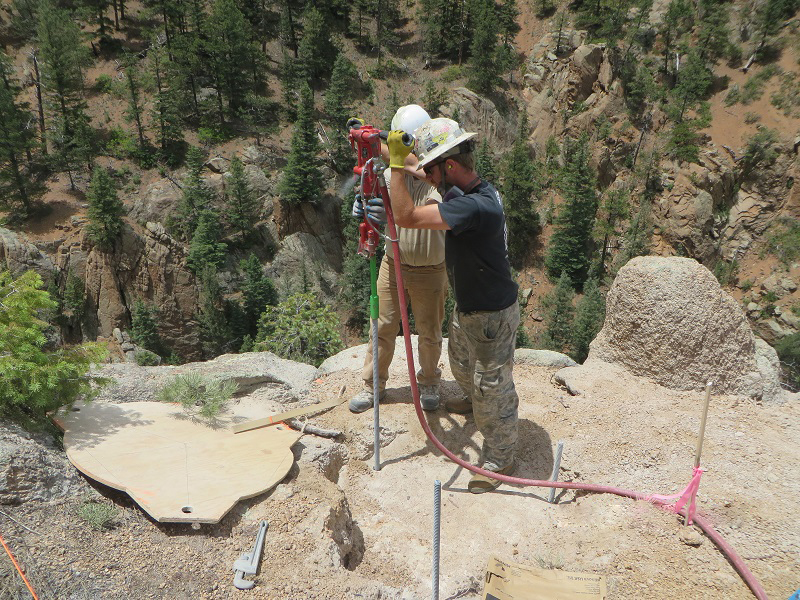What do you think of when you hear the word “foundation?” If your mind goes to buildings, you probably have an image in your mind of a big concrete base that provides a solid place for a structure to sit.
Those concrete slabs are the most common type of built environment foundation, but they are certainly not the only ones. There are many conditions where a traditional foundation is not appropriate or feasible, including sites that are difficult to access or have poor soil conditions.
When thinking about foundations, it’s important to remember that a foundation’s role is to provide a secure, stable place to anchor a structure. The foundation is the lowest part of the structure and is there to transfer the structure’s load to the soils beneath it.
One great example of a structure that needed a different approach for a foundation is the Broadmoor Ropes Course in Colorado Springs, Colorado. The ropes course is located in the Rocky Mountains, taking its users on thrilling zipline rides through the woods and over a rugged Rocky Mountain canyon. In a condition like that, a big concrete slab is not only inelegant and impractical, but impossible.
For this course, we used a combination of micropiles and rock anchors for the foundations, using the micropiles in the woodland portion of the course. A micropile is a small diameter pile of a varying depth, that is typically 4 – 12” in diameter – in the case of Broadmoor some of the micropiles were about 4” in diameter. The micropiles are composed of steel reinforcement and cementitious grout, which was then set in soil or decomposed granite. The anchor for the structure is set in the pile, and then the structure mounts to the anchor.
For the canyon portions of the course, we used rock anchors vary from ½” to 2” in diameter. Rock anchors are composed of steel reinforcement and a chemical adhesive.
At Froelich Engineers, we have used micropiles to tie a wide variety of structures down. When we execute a design with micropiles, we collaborate closely with a Geotech engineer and the installer, who helps us evaluate the rock and soil conditions. We then work with them to provide anchor solutions for the various conditions they uncover. We have also overseen testing and approval of anchors for these technically complex projects.
Micropiles are an extremely versatile solution to many problems faced in engineering. They can address a variety of challenges in projects, including but not limited to:
- Poor soil conditions
- Retrofit and repair
- Historical repair and upgrades
- Shoring and underpinning
- Remote or tight locations where traditional equipment and installation methods would not be feasible

